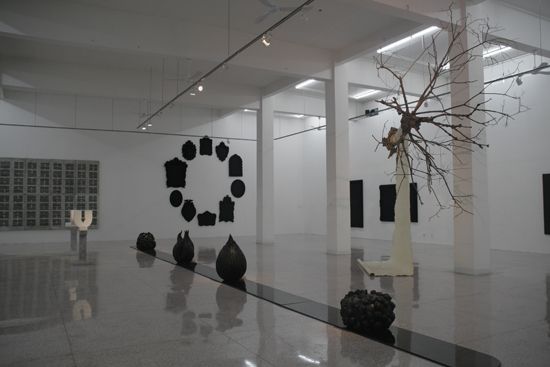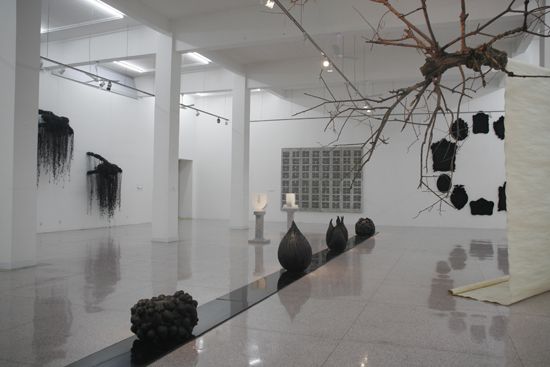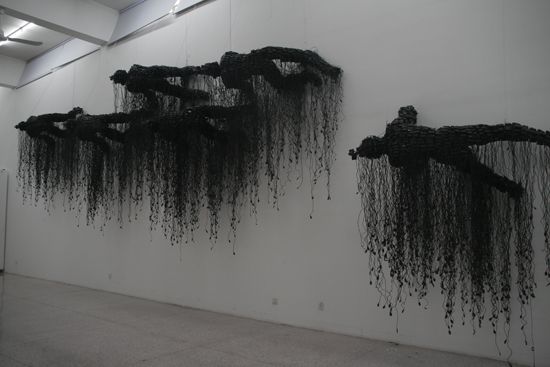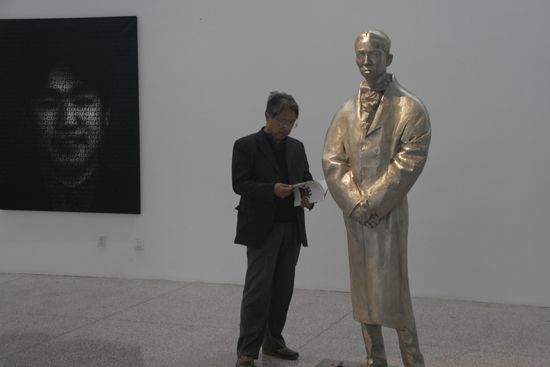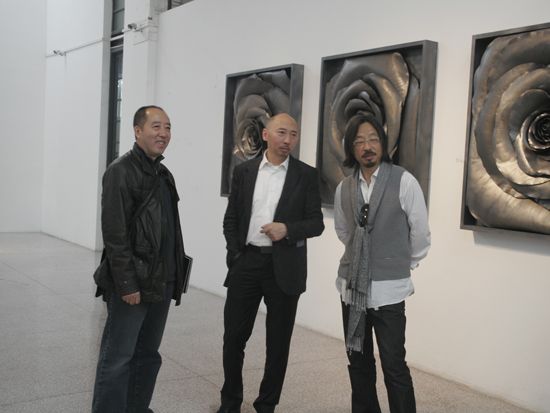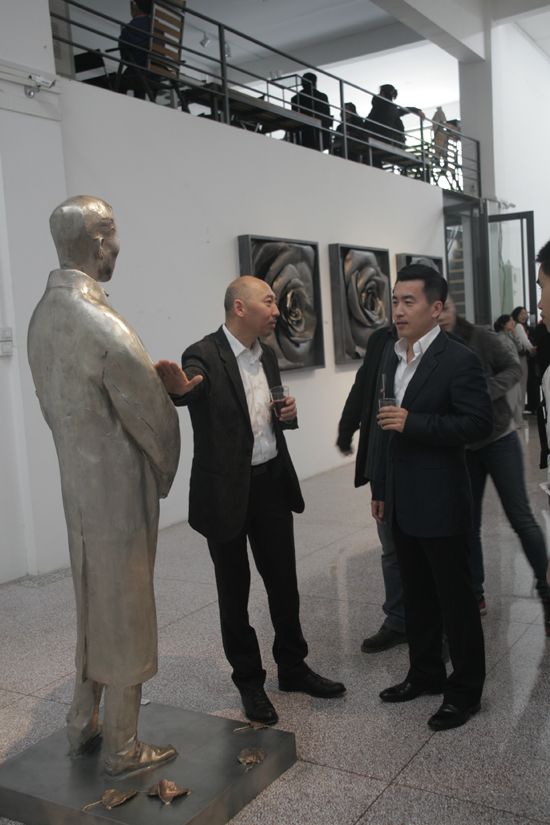Part One
The colors of black and white are completely opposite. Nothing can be so distinctly different. For this reason, these two colors are always together, making an inseparable pair just like Ying and Yang, man and woman, and day and night.
The colors of black and white are symbols of our spirit. Just as the nature changes over time, they are refracted in the form of X light after being received by our retina, providing a platform for us to think. Different as they are, they are conveyed to our nerve center where hormone helps us to react.
The term black, achromatic, is used to describe a world behind, underground and dreamy. In another case, it is also often used to imply violence such as blackmail, blacklist and black market. In general, black is used to express negation. Just as we consider the blackness, or darkness, in the society, black is probably the most immediate color to reflect. It is black that represents nobleness, conveys sadness and contains unpredictable power.
White represents the color of what is decolored and also the light of which there is no source. When we wake up after having a dream, our mind goes blank. The beauty of a virgin is boundless because she has never had sexual intercourse. A bride always has a most beautiful moment in her life because at that moment she dresses up white. In the contrast, ignorance is also white and so are information blackout and restriction. White is a metaphor of the deprival of freedom and struggle for freedom. Illusion occurs in the white sea of mist but the mist might contain some hazard substance.
We cannot discern what is black and what is white because they exist so differently and represent the two sides of things around us. We cannot identify the definition, conversion, confusion and difference of what is of two opposite sides. These words are difficult to explain and full of paradoxes, not to mention to “call white black”.
In the western world, birth is described as white and death as black. In most part of China, death is in connection with white - white mourning clothes build a white world, and from the other view, death is the revival in the heaven.
In the visual world, black and white are perpetual. The visual effects of black and white are so powerful that they speak for the history. The first half of the last century witnessed genius artists appeared. They reflected that period of history in their paintings and works, black and/or white, such as Walter Benjamin and Chaplin. Guernica, one of the greatest works of the color painting artist Pablo Picasso, is in black and white.
The perpetuity of black and white verifies that of Ying and Yang in Yijing.
Part Two
As implied by the name, this exhibition shows nothing other than works in black and white.
In addition to simple colors, behind the exhibits are the combination, conflict and contradiction of their colors and appearance. The highlight of white exhibits, Urinal by Du Shang, reflects the contracting concept of the purpose of a urinal. Apart from the positions represented by the colors, the interactions of colors and the objects are indispensable in the works. We like the smoothness and spotlessness white provides because it jokes about some realities. We accept the nobleness black conveys because it is against the rules. I hope the exhibits are aggressive and guilty; otherwise, they cannot doubt or even deny the secular concepts.
Like at the corner of a city in the dark where a man is raping another unknown woman, who is welcoming him with smooth body movements.
The exhibits are expected to be aggressive and guilty just as in a dark corner of a city, a man rapes a strange woman while the woman interacted with him.
Relativity grows to negation after the process of art. The works containing relativity and also negation are of art, personal and sexual charm. The art negation derived from two opposite colors is of historical, social, philosophical and political charm.
This small exhibition cannot contain all the meanings of black and white - after all, it lacks the opportunity and works from geniuses. It is important, however, that I realize that colors may contain non-color-nature political, social and historical meanings, which suppress and challenge color natures, as well as providing artists the right of anti-suppression and re-challenge.
On the other side, black and white works without social implications would be dull and those without sexual implications would be vulgar as those common mainstream commodities. This exhibition focuses on the overlap of art and non-art factors and will inspire and surprise you - only if you are a soul activist other than suffering from spirit amnesia.
This exhibition is designed to show the simple black and white works that reflect the darkness and oddity in the real world. It does not place any restrictions on the theme, material, form, content or way of expression of the exhibits.
Part Three
“Will is there whenever we can see,” Shao Yinong told me. I thought of Gu Cheng’s poem, "Even with these dark eyes, a gift of the dark night, I go to seek the shining light."
Recently Mu Chen and Shao Yinong are obsessed with black. They bind black cashmere on many ornaments. “Black contains everything,” quoted from Coco Chanel. They allow everything contains black. Though their role is to conceal, the rigid adherence on skills and materials seems concealing something else. Maybe in face of the reality that all ornaments are artificial, more effort should be made to make them faker, in order to gain another reality: the reality of being contained,being vanished, being symbolized and being alienated.
Sui Jianguo used to use text with visual sense as source material, such as “Mao Suit” and “Windy City Dinosaur”. Sui Jianguo’s works are good examples to reflect the situation and implications of contemporary arts in China. History and contemporary, text and visual signs, after all are the narration and deviation of ideology. In other word, the mistake made by typical political subjects and art forms provoked and found the creation inside. It is produced under processing, or “created” from being samples of experiments. Like in the Sui Jianguo’s exhibiting artwork “Folding Space”, he provides reality, with illusive blank at the same time. The two components become a complementary artwork state, fit into each other in the process of seeing and imagining, so as to make audience doubt about or believe that the artwork is real.
Li Xiangqun’s sculptures are comparable to real objects─that objects cannot be left aside when comparing to the artworks. So we cannot neglect his works of Mao Zedong, Empress Dowager Cixi ,and Liang Sicheng in this exhibition. Li Xiangqun uses a swift technique to recreate “fiction” ─the real portrayal statues of characters in the past. The sincere of real portraits and retrospective romance grant the characters the warmth arises from materials. Even it possesses the real form of Academism, Li places the “characters” on the techniques shaping of “virtual” time and space. These incredible real characters appear in the space, like monuments, like the common people passed by. The memory of cruel history disappears since then, and this is Li Xiangqun’s unique and proficient talent.
I always resonate with Zhang Dali’s artworks. He is pragmatic, created the head portraits graffiti and AK-47 signs. At the same time he is quick-witted. He created─more accurately─he discovered “A Second History” in press photography. From these we may find his artworks mainly concern two subjects: life and death. Head portraits graffiti could be understood as the memory of life, the clamor of life; AK-47 denotes death, it’s a contemporary sign which declares the life termination.
Guo Gong’s “A Tree” is straightforward. The indistinctive words on the peeled wood paper can be seen immediately: so naturally delicate and white. Reality, on the other hand, is the tree branch stretching like an arm, screaming perversely, hopelessly and dimly. This the atmosphere we are living in─economic development, advanced technologies and the destruction of natural environment. Carefree and grieving, privacy and violating, are all winding and developing in it.
Opposite to Guo Gong’s management, Cang Xin’s “Spiritual Crystals” has the log carved into the intended shape then has it burnt into black carbon shape. The intention is to emphasize the relevance of the five elements, metal, wood, water, fire and earth, which have been repeatedly discussed by the artist; and the cycle process of rituals and lifetime. Undoubtedly, Cang Xin’s works always possess the mystery of heresy and pagan fatalism of pristine human beings. This is also the artist’s original intention. As Greek philosopher Plato goes, “Ancient men are better than the men at the time, for they are closer to divinities.” I think these works reflect the artist’s characters, also get purified in the contradiction between complex determination and pure performance.
Cement is a special material, which is usually unpresentable, but sometimes shows its beauty unexpectedly. Liu Jianhua’s “A Bible” is a successful example to present the experiment with the use of cement.
Unlike other materials, ceramics in Chinese arts always give attributive answers. These years, Liu Jianhua’s ceramic works have always gained the special attention. Started from his Qipao series, works are always granted names and certain values under certain background. The artist is therefore used to get rid of the vanity of being ceramic artist and have brand new starts. There must be things which can be shaped into forms, but not only being recorded down and being justified. All are in the hands of Liu Jianhua, who are able to create those indescribable and from the long-ago traditions.
In the past, Liu Bolin has hid himself in every artificial background─shop, highway, walls with painted slogans. This is the production process: invite a party to constitute the background, the artist portraits himself in the background, takes a photograph out of it and then exhibits it─the photo is a quantified background of artificial society, and the artist’s eyes can be vaguely seen. The exhibiting work has returned to (earlier works’) three-dimensional human body shape. The skin of each human body is embedded with cell phone recharger and enveloped in black wire nets, crawling towards the same direction. This reflects the information age we are living in─human organisms are subordinated to information-produced system, and relying on mechanic force and rules to act in unison. As Benjamin goes, “At the time, those who always win will march into the line of triumphant.” Is that Liu Bolin’s “Getting Out of Utopia” the line of triumphant today?
Cai Zhisong has produced some figure sculptures similar to terracotta warriors. These figures possess the tension of modeling—which comes from the classic, also from the collegiate modern realistic skills. I think these works are distributing an inexplicable traditional quality, like from the hands of ancient men. Certainly not, except Buddhist sculptures, Chinese sculpture history has been cut off since Chin & Han Dynasty. I have read some comments about Cai Zhisong’s works on the Internet. I would think variation comes from the natural means of expression, or situates at the self-confidence of the flow of creation power.
